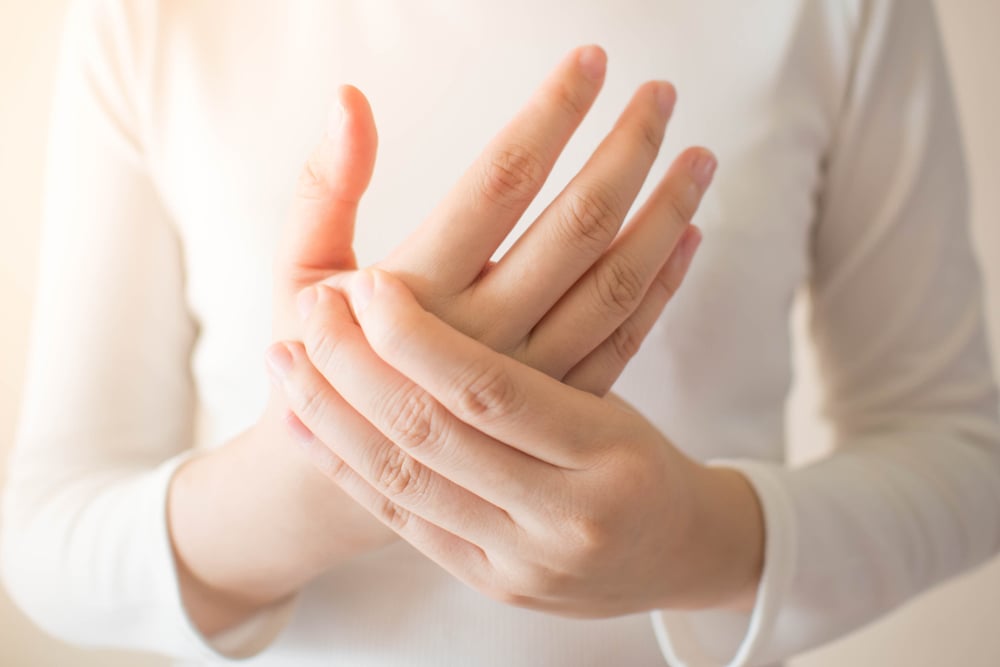People are always harping on you to drink more water, but did you know that there’s such a thing as overhydration. Drinking too much water can cause low electrolyte levels, which causes a whole range of negative side effects. When your electrolyte levels drop or become imbalanced too fast, the results can even be fatal.
People frequently at risk of over-hydrating include endurance athletes who row, cycle, run marathons, or do rigorous hikes. Here’s how to make sure you’re drinking a safe amount of water on a daily basis.
1. Tired muscles
Do you frequently feel that your muscles are fatigued, even if you’re not working out? Other side effects can also cause nausea and aches, so if you’re drinking a lot of water and suffering from these ailments, over-hydration may be the culprit. This is due to sodium levels dropping in the blood.

2. Swelling of body parts
If you feet, hands and lips are experiencing unusual swelling, you might be drinking too much water, as this is a common side effect of electrolyte imbalance. Fluids in your body try to correct imbalanced blood sodium, and the result is “fluid overload,” which can cause swollen limbs.

3. Feelings of confusion or disorientation
If you at all experience delirious feelings, confusion, or being disoriented, seek medical attention as this is a serious repercussion that happens when our bodies consume too much water. This might be a sign of brain swelling.

4. Headaches
Along with that frustrating brain fog, drinking too much water can cause serious headaches and migraines. When your body can’t eliminate extra water on its own, cells swell to make more space for it, and due to our skulls enclosing our brains, there’s no room for expansion, which all leads up to that headache.

5. Drinking when you’re not thirsty
Drinking water frequently when you’re not thirsty is a red flag that you could be over-hydrating. Our natural thirst should generally indicate when we need to drink water, so even if you’re working out or worried about your H20 intake, let that thirst build up a little first.

6. You’re urinating more than six or seven times a day
Apparently this is the average amount that humans produce over the course of 24 hours, so if your amount is drastically above that, re-examine your water intake. Another good way to tell is if you’re waking up a lot in the middle of the night to go to the bathroom.

7. You always feel tired
Weirdly, this is also a symptom of dehydration, but you know your habits best. Over-hydrating can cause a massive energy loss and an onset of drowsy feelings due to electrolyte imbalance that your body is experiencing.

8. You’re getting cramps
Along with muscle pain and fatigue, a common overhydration culprit is loss of potassium. Potassium helps minerals contract and relax muscles, and when you’re peeing it all out, cramps may come more easily. After all, potassium is an electrolyte, and sometimes no amount of bananas can solve your pain.

How to hydrate properly
Finding your sweet spot when it comes to hydration is tough for some people, so try to follow these rules.
1. Daily consumption should equal a half-ounce of water per pound of body weight. If you still find yourself thirsty, very slowly increase. But remember that your BMI comes into play here as well.
2. News flash: water isn’t the only fluid. A range of drinks and fresh fruits and vegetables contain lots of water. Soups also count, of course. So if you’re eating tons of those daily, you might not need to chug as much water.
3. Weigh yourself before and after workouts you’re extremely athletic. The weight difference will help you see how much fluid you’ve lost. Just don’t start obsessing over your weight as a result! Every pound of water weight lost can be replenished by two cups of water.
4. Don’t chug a set number of glasses daily. Drinking your water intake all in one go isn’t ideal – instead, spread it out over the day and pay attention to factors such as the weather, your activity levels, and what you’re eating.